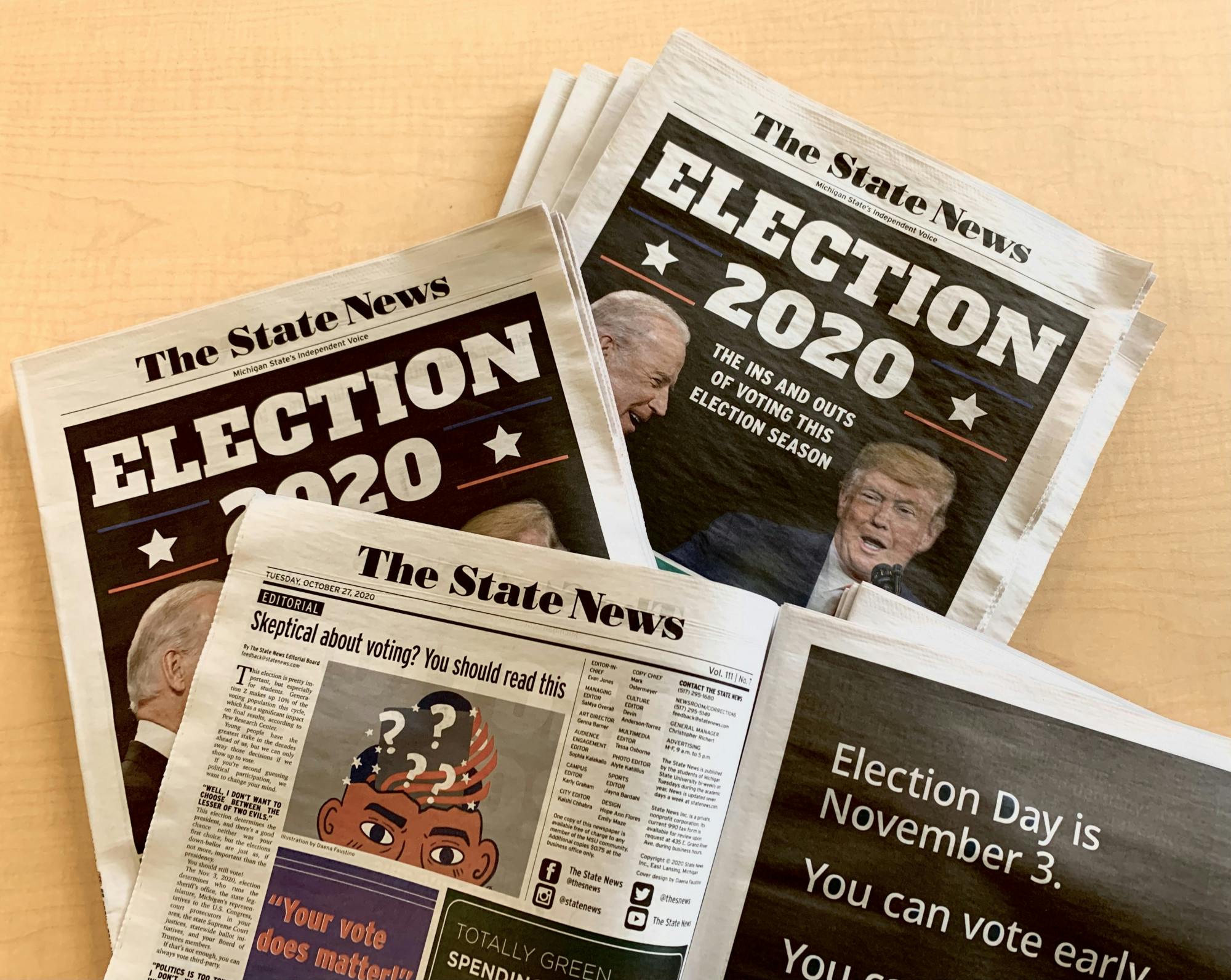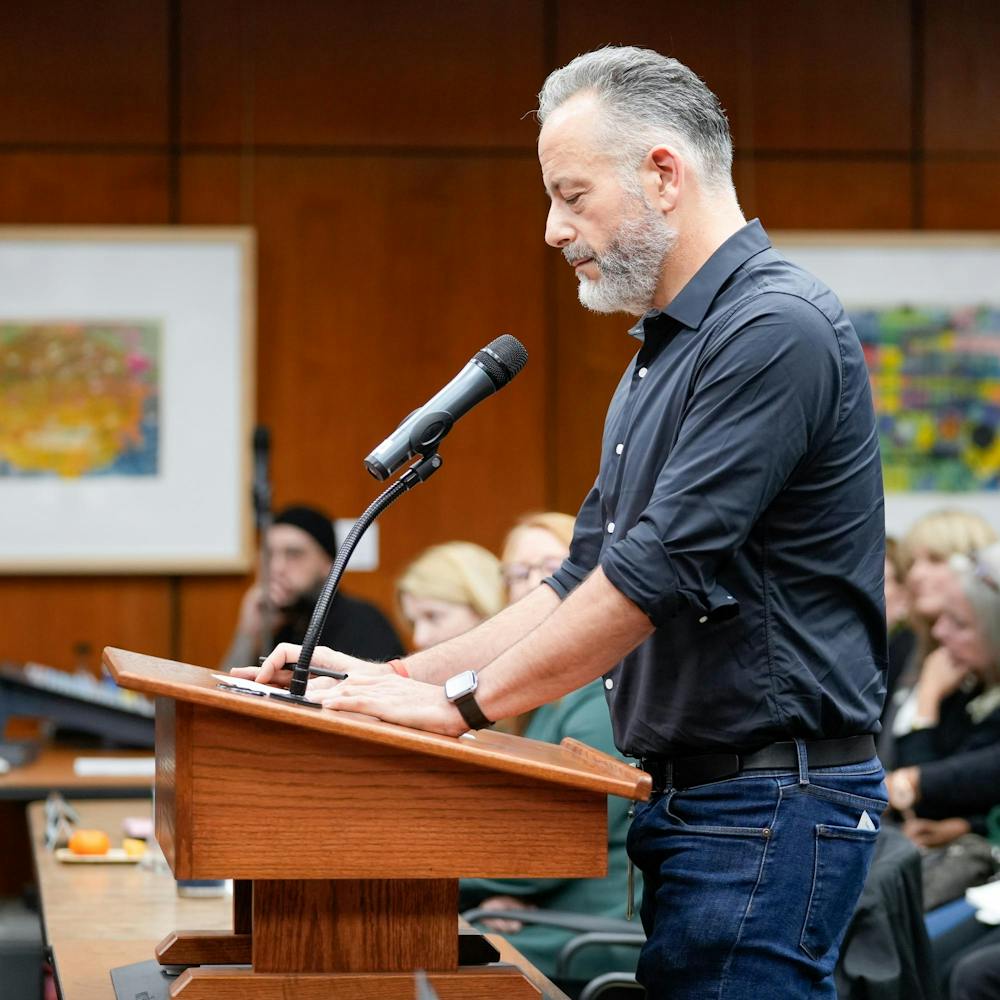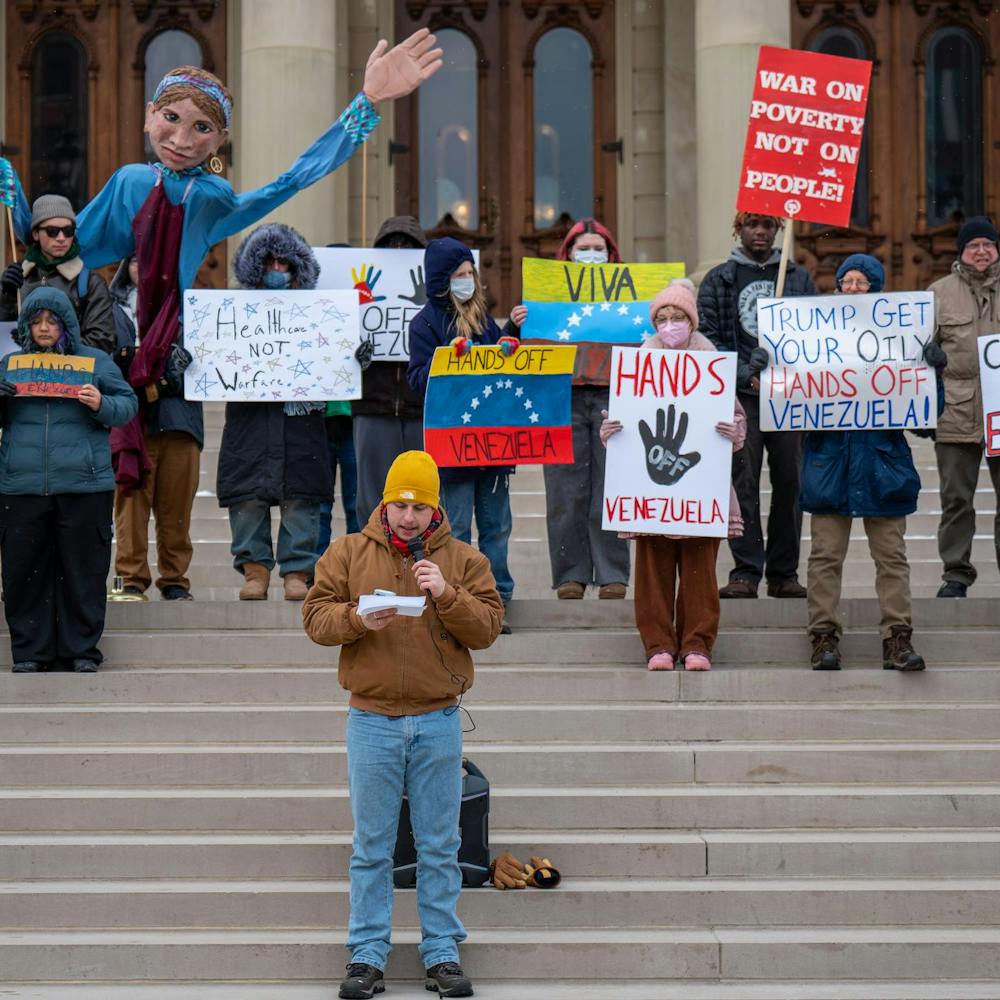It’s a difficult problem to tackle, partly because of implicit and explicit comfort zones people need to break, but also because the solution is never complete. There is always more and better work to do to provide representative storytelling.
This report serves as a model for each semester that follows, where State News editors break down data points about our staff and our reporting to guide how we expand our student reach.
Our guiding metric is to report stories that are relatable with a wide range of lived perspectives to steer both coverage and hiring decisions.
This also provides the Michigan State community an understanding of the backgrounds of students who bring you daily news coverage.
We believe it is imperative to recognize the biases in all aspects of the newsroom in order to continue to engage and represent the diverse community that relies on us for all things MSU.
How we made this report
The State News developed a diversity team this fall, comprised of our editor in chief, managing editor, culture editor and internally elected diversity and inclusion representative, created to set goals and act toward a set of goals including:
Constructing an assessment of newsroom performance reflected in this report
A demographic breakdown of who was hired compared to the overall student population
Identifying new content areas to explore while guiding story development in these areas
Issue recommendations for the spring 2021 semester and beyond
Our newsroom staff will continue to act on improving these metrics, and our efforts will be further outlined below
Staff breakdown
The State News newsroom staff consisted of 47 MSU students. Forty-three of these students responded to a staff demographic survey.
During the fall 2020 semester, 79.1% of the staff, or 34 people, self-identified as white. The 12 other staff members self-identified as follows:
- 7% Black
- 7% Hispanic or Latinx
- 7% Asian or Asian American
- 2.3% Indian or Indian American
- 2.3% Middle Eastern
- 2.3% Hawaiian or Pacific Islander
Michigan State University reported that the student population was 74.4% white in fall 2019, which equals about 32,865 students. Students of color made up 24.2%. Of that,
- 7.9% were Black
- 5.7% were Hispanic or Latinx
- 6.8% were Asian or Asian American
- 0.1% were Hawaiian or Pacific Islander
Support student media!
Please consider donating to The State News and help fund the future of journalism.
MSU didn’t indicate specific percentages for Indian, Indian American or Middle Eastern students.
The State News staff is majorly female-identifying, with 27 female-identifying members compared to 15 male-identifying staff members. One staff member identified as transgender or non-binary.
In terms of sexuality, 33 staff members identified as heterosexual, while 8 identified as bisexual, homosexual or asexual. Two staff members who responded to the survey did not report their sexuality.
Only one respondent is an international student at MSU. Seven staff members are out-of-state students, leaving the remaining 35 staff members as in-state students.
Also, about 67% of staff members don’t identify as first generation students, while about 33% do.
Among class status, The State News is fairly equally split between sophomores (30.2%), juniors (25.6%) and seniors (30.2%). Freshmen account for only 11.6% of the staff, and fifth-year or more students account for 2.3%
Recommendations for future hiring
It is recommended that The State News prioritizes hiring voices of color as it proceeds with future hiring. Meaning, there should be a strong focus on recruiting students that represent marginalized communities on campus.
This includes but is not limited to African American students, International students, Latinx students and Asian students.
It is also recommended that The State News hires students whose ideology might be different from the majority of the staff. Meaning, The State News should focus on hiring those who might identify as Republican or Independent.
Along with the first two recommendations, The State News should also prioritize hiring students who identify with the LGBTQ community as well as a variety of religious groups to ensure that the paper reaches all audiences.
Coverage breakdown
The State News published 611 new stories on statenews.com between Sept. 1 and Dec. 1. This includes everything from our city, campus, culture and sports sections as well as opinion stories, guest columns and editorials.
One of the ways we can analyze our coverage is to inspect the tags we use for each published article. This comes with limitations because each article has multiple tags.
Nevertheless, mapping our most frequently-used tags can paint a picture of the overall trends in our reporting, specifically, where our comfort zones lie.
This graph shows each tag that was used 10 times or more. It’s not surprising that "coronavirus" and "football" were the top tags. What’s clear is that we have a strong bias for government and sports reporting.
In a year of uncertainty, scheduled meetings and sporting events provide structure that is easier to follow. There is also more opinionated and analytical content attached to sports than other sections, hence why "football" has such a large share of tag usage.
While these 22 tags have the highest frequency with 10 or more, out of 385 unique tags, 309 of them were used only once or twice.
This spring, State News articles should have fewer and clearer tags to remove redundancy in tracking this data, as well as a real-time tracking system so that this system is clearer to the newsroom as the semester progresses.
What’s new in the spring
This fall, we launched the Culture Desk in an effort to find unique angles typically undercovered in our city and campus sections. This spring, the Culture Desk will expand and include more specific roles, including a reporting position for minority affairs.
For decades, our staff has internally elected a diversity and inclusion representative at the beginning of each semester. Also starting in spring 2021, this will be a paid position with a greater editorial responsibility than has previously existed.
This individual, newly hired each semester, will coordinate with newsroom leadership to plan and initiate diversity goals within and throughout the newsroom.
The individual in the position will continue to hold a spot on the State News editorial board.
In addition to strengthening relationships with minority student organizations on MSU’s campus, this position will help guide our progress in achieving more representative coverage. In order to create representative coverage, we need to keep track of what we’re publishing and who we’re talking to.
Upper level journalism classes already have a model for documenting the demographic information for sources interviewed. With a hired diversity and inclusion coordinator, we believe we can follow our reporting patterns in real-time for the generations of State News staff members that succeed us.
We recognize that as a student newspaper, we are too comfortable in our reporting.
Our everyday coverage of breaking news, sports, university administration, student government, state government and more brings valuable information to our audience, mainly the students of Michigan State University. However, our coverage on the unique subcultures of the MSU student body is sporadic and short lived.
It’s not good enough.
Going forward, we will connect with members of marginalized groups on a more regular basis. We will put more effort to cover issues pertaining to these groups without the pretext of breaking news or protests.
We recognize that inclusion and diversity in our coverage can only happen when we invite outside voices to weigh in on issues that matter to all students. This means we must be more persistent.
Our goal for the next semester and beyond is to develop a more trusting relationship between our minority sources and The State News. We are dedicated to listening to a wider range of student concerns, perspectives and questions. We recognize that part of the battle lays in increasing the diversity of our newsroom staff. Having more voices contributing to the discussion of inclusion is the best way to ensure all voices are heard.
Staff members will participate in an implicit bias and microaggression training at the start of each semester as part of our training process. This presentation, led by the diversity representative, will educate both new and veteran reporters on their different biases and how to avoid letting it affect the content they produce.
The State News most importantly wants to continue to be and improve at being authentic. Change only comes from real conversations with open ears.
Making room for discussions about diversity means acknowledging your blind spots and actively working to improve them. We are dedicated to improving these areas and more as they arise.
The State News Diversity Team consists of Editor-in-Chief Evan Jones, Managing Editor SaMya Overall, Culture Desk Editor Devin Anderson-Torrez, and Diversity and Inclusion Rep. Di’Amond Moore.
This report is part of our Women in the Workplace print issue. Read the full issue here.
Discussion
Share and discuss “The State News fall 2020 diversity report” on social media.







